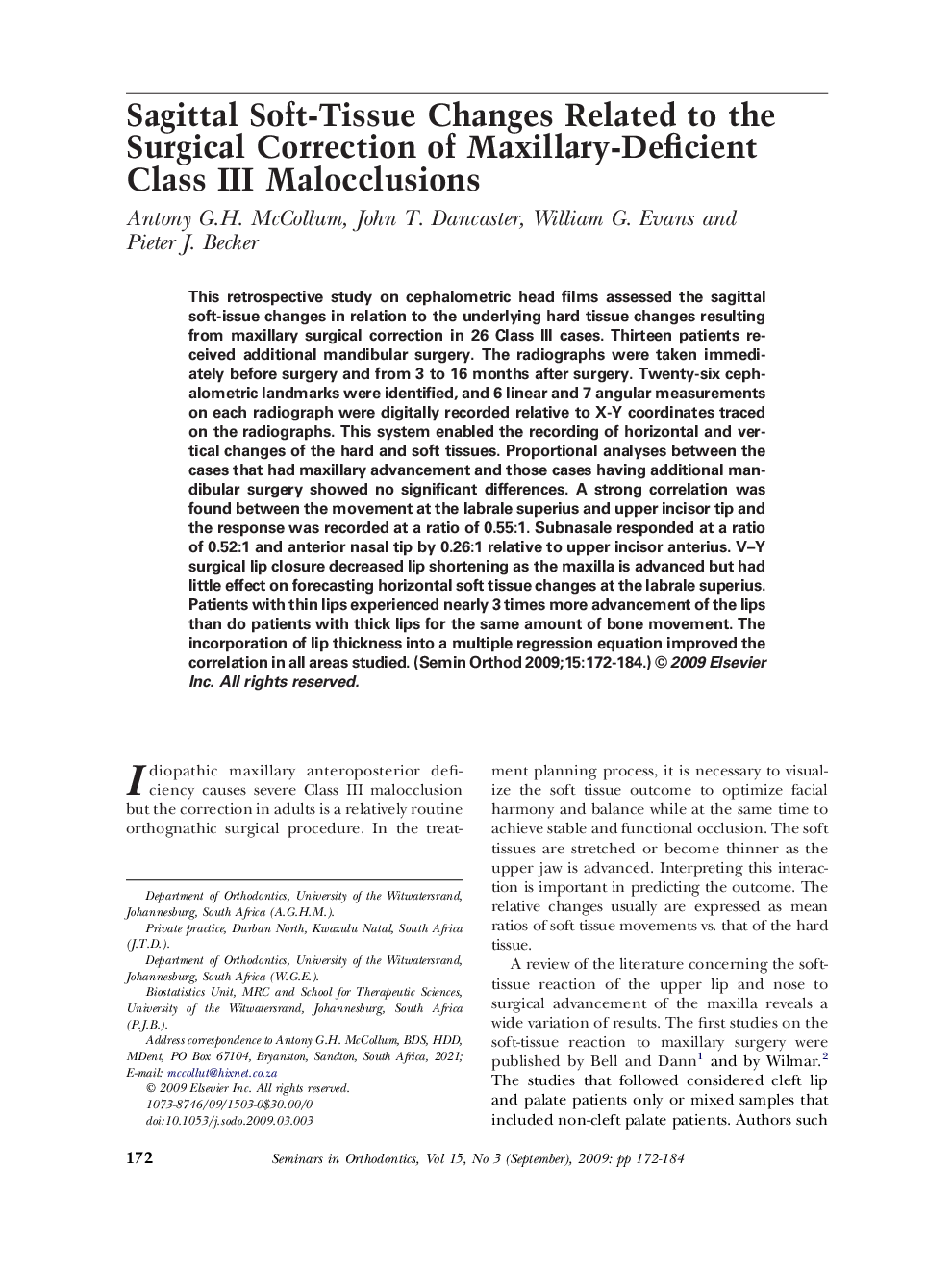| Article ID | Journal | Published Year | Pages | File Type |
|---|---|---|---|---|
| 3175693 | Seminars in Orthodontics | 2009 | 13 Pages |
This retrospective study on cephalometric head films assessed the sagittal soft-issue changes in relation to the underlying hard tissue changes resulting from maxillary surgical correction in 26 Class III cases. Thirteen patients received additional mandibular surgery. The radiographs were taken immediately before surgery and from 3 to 16 months after surgery. Twenty-six cephalometric landmarks were identified, and 6 linear and 7 angular measurements on each radiograph were digitally recorded relative to X-Y coordinates traced on the radiographs. This system enabled the recording of horizontal and vertical changes of the hard and soft tissues. Proportional analyses between the cases that had maxillary advancement and those cases having additional mandibular surgery showed no significant differences. A strong correlation was found between the movement at the labrale superius and upper incisor tip and the response was recorded at a ratio of 0.55:1. Subnasale responded at a ratio of 0.52:1 and anterior nasal tip by 0.26:1 relative to upper incisor anterius. V–Y surgical lip closure decreased lip shortening as the maxilla is advanced but had little effect on forecasting horizontal soft tissue changes at the labrale superius. Patients with thin lips experienced nearly 3 times more advancement of the lips than do patients with thick lips for the same amount of bone movement. The incorporation of lip thickness into a multiple regression equation improved the correlation in all areas studied.
